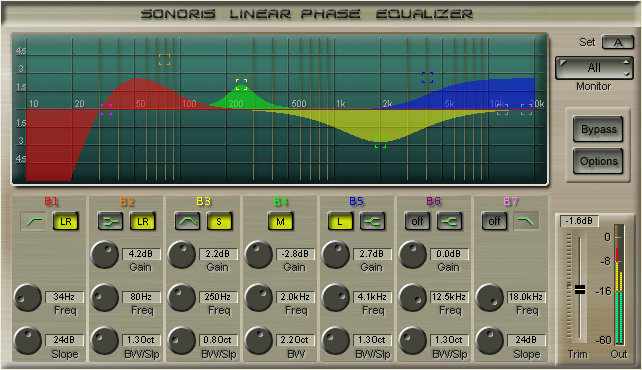

We’ll consider the pros and cons of linear phase EQ processing and look at various examples to solidify our comprehension. In this article, we’ll learn all there is to know about linear phase EQ and how it compares to the other types of EQ. Achieving linear phase is not possible with analog circuits and has been made possible with computer coding. There is no phase shift, and, therefore, the phase is “linear”. What is a linear phase equalizer? A linear phase EQ is a type of equalization that does not alter the phase relationship of the source. This tool can be used to great benefit regardless of how experienced we are with EQ. And I hope the bit on Linear Phase EQ opened up some new ideas.Linear phase EQ is a powerful audio effect/process that deserves to be understood by audio professionals and hobbyists alike. I encourage everyone, regardless of experience level, to continue challenging themselves. More than anything, Advanced Mixing is about discovery and opening up possibilities.


Phase shift is part of the natural way we perceive depth so it’s not like one approach is inherently better. And the same is true in terms of EQ’ing close captures of drums as well. Depending on what we’re going for, one may be preferable to the other. The linear phase will retain more of the body of the combined sound, but may not possess the same depth or dimensionality. In this instance it’s worth experimenting with both linear phase and minimal phase EQ for the hi-pass. For example, hi-passing a duplicate vocal track at around 2k and adding a tiny tiny bit of distortion and sometimes some compression can make for a very effective exciter. While on the subject, I think it’s worth mentioning that there are times that this phase change can be good. Because Linear Phase EQ has the same phase change regardless of Q and degree of attenuation, those potential artifacts are eliminated. This creates a massive amount of phase shift right around the band pass, effectively adding artifacts in the process of removing the resonance. The reason it’s not so great in my parallel resonance remover is that the Q is extremely narrow, and the degree of attenuation is consistently changing in time.


 0 kommentar(er)
0 kommentar(er)
